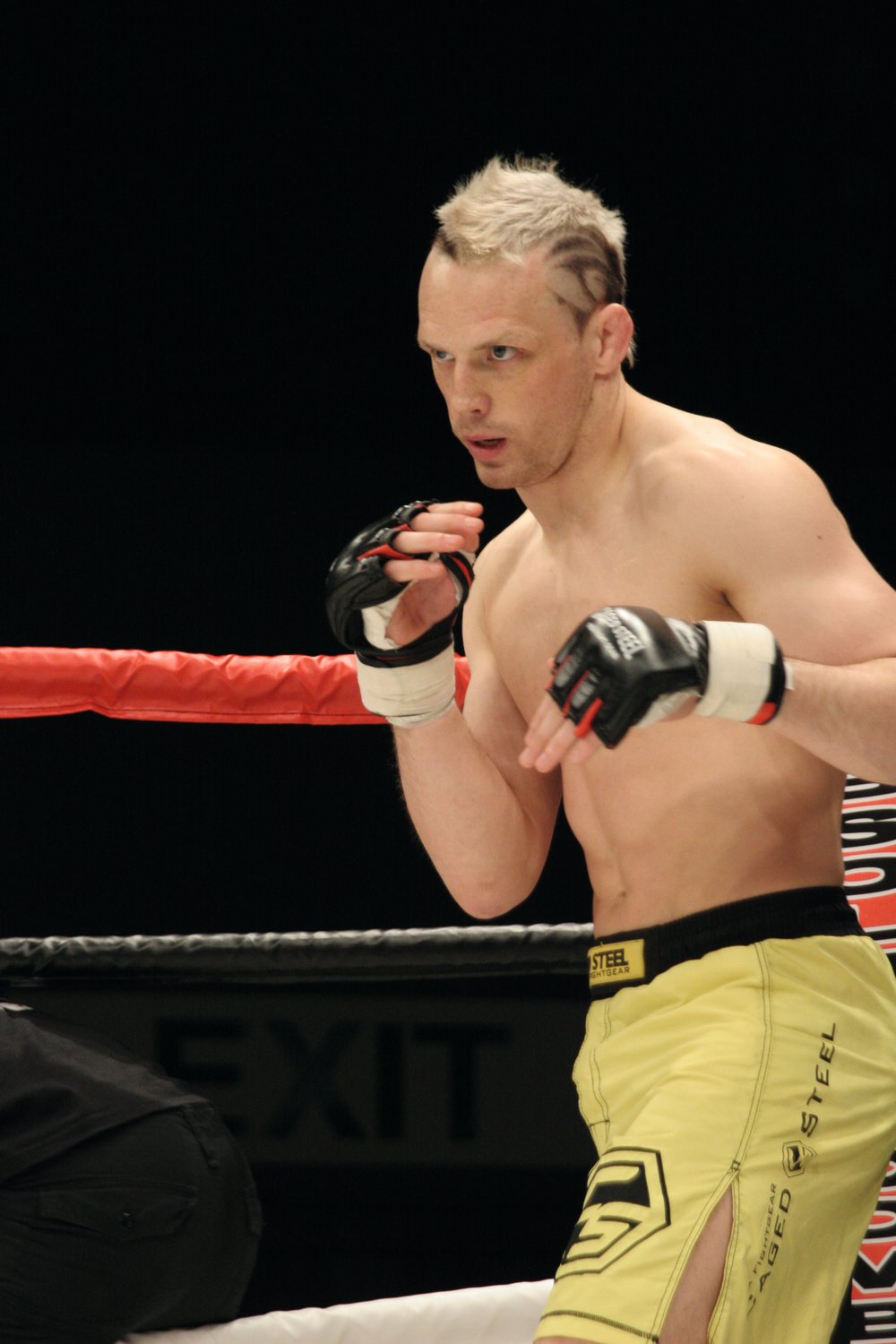
Issue 070
December 2010
By Paul McVeigh. Grappling requires a high degree of isometric strength and endurance, yet very few athletes are focusing on isometric training. Everyone knows the benefits of weightlifting, but what about supplementary training for the fighter that just wants to rip your head off with a guillotine?
Isometric training
Isometric training is as simple as squeezing the muscles without moving your body. An isometric contraction can take place in almost any static position, but a good example would be the squeeze you use when finishing a rear naked choke: your arms don’t move, but you still put all your strength into it. In the case of a ‘regular’ exercise, imagine squatting and hanging out in the low position for a number of seconds before coming back up. The time spent at the bottom of the squat was isometric, as your muscles were working without you straightening your legs.
The energy expended when performing isometrics is less than that expended during conventional lifting. This makes isometric training a great tool for maintaining strength gains during in-season training. During isometric training it is common to hold positions of tension much longer, boosting the time under tension and subsequent increases in strength.
There are many advantages to isometric training: the force produced during isometrics is often equal to or greater than that during normal lifting. This force production leads to positive neural adaptations. Basically, you can get really, really strong – fast.
Isometrics allow the athlete to effectively target weak points in a lift or technique. The gains from an isometric exercise are limited only to the muscles that are active, unlike big compound movements such as a deadlift or squat, which can increase total body strength. When you lift a big weight off the floor you’re using almost every muscle in your body, but an isometric exercise only targets a few. For example, if you’re squeezing something like crazy, it’s not going to make your bench press better.
It is possible to develop strength and muscle mass with isometrics, as a major factor is the time the muscle is under tension. The longer the squeeze, the more the muscles are worked. It’s not uncommon to perform an isometric hold for 30 seconds or longer. This can be hard to achieve with traditional lifting, where reps are completed in a matter of seconds.
Although it is possible to achieve rapid strength gains with isometric training, these quickly taper off. For this reason, isometric training should be largely confined to training out of camp or early during a fight camp (where a rapid boost in strength will be at its most beneficial).

The Iso-ballistic method
One of my favorite methods of isometric training is the iso-ballistic method. It’s as simple as it sounds – ‘iso’ (as in the isometrics discussed above) paired with ballistic (or explosive) movements.
Performing a rapid movement straight after the deep squeeze of an isometric hold allows you to improve strength at the weakest point of an exercise and then use that strength in a dynamic movement. Struggling to get a big guy off your chest? Pushing him off is tough when you’ve got no leverage in your arms, but iso-ballistics can you make you stronger in that bottom position as you’ll be able to apply more force without relying on movement.
Isometric training is just a part of the overall strength and conditioning picture. A program that consists only of isometrics or iso-ballistics would leave an athlete poorly prepared for the rigors of fighting. MMA is dynamic, and priority must always be given to dynamic movements, but as a supplementary tool isometrics and iso-ballistics have a lot to offer.
HOW TO PERFORM
Upper Body
Drop down to the bottom position of a push-up. Get someone to apply downward pressure to your upper back as you push back up against the resistance. Drive up against this pressure with maximum effort for 15 seconds. At this point your partner will remove the pressure – immediately perform three to five clapping push-ups.
Lower Body
Perform a Bulgarian split squat while holding a pair of dumbbells. Stay at the bottom of the split squat for 12–15 seconds before dropping the dumbbells and performing three to five Bulgarian split squat jumps.
Paul McVeigh is a sport scientist and professional fighter, and is ranked the number one bantamweight fighter in Europe. He trains fighters out of The Griphouse Gym in Glasgow, Scotland. He can be contacted with any questions or queries via email: [email protected]










